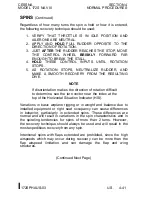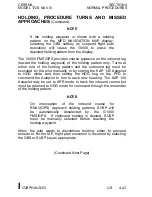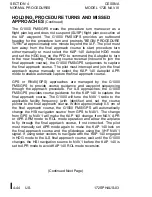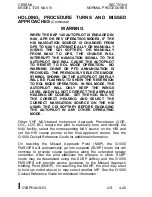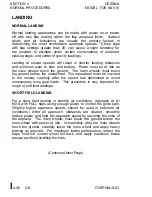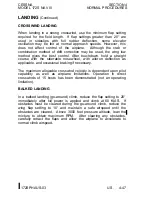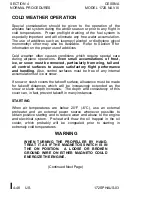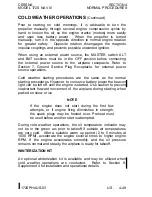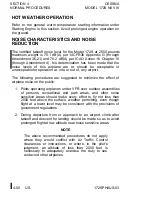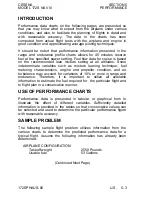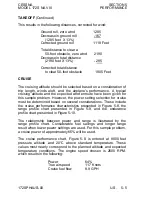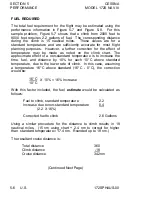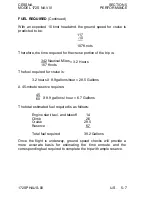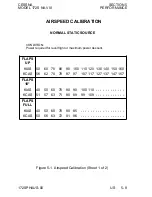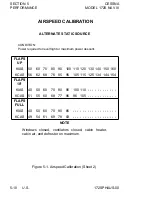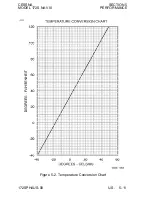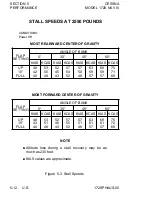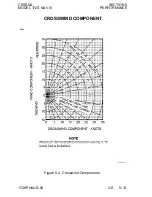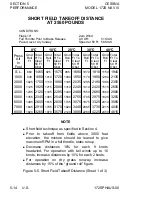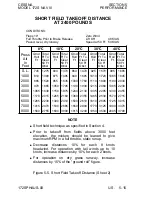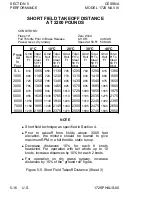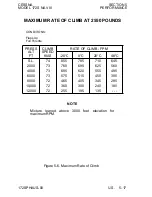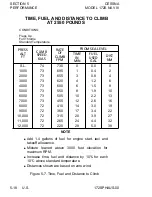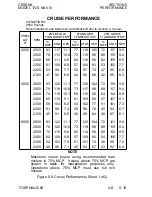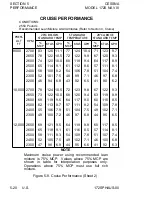
CESSNA
SECTION 5
MODEL 172S NAV III
PERFORMANCE
TAKEOFF (Continued)
This results in the following distances, corrected for wind:
Ground roll, zero wind
1285
Decrease in ground roll
-167
(1285 feet X 13%)
Corrected ground roll
1118 Feet
Total distance to clear a
50-foot obstacle, zero wind
2190
Decrease in total distance
(2190 feet X 13%)
- 285
Corrected total distance
to clear 50-foot obstacle
1905 Feet
CRUISE
The cruising altitude should be selected based on a consideration of
trip length, winds aloft, and the airplane's performance. A typical
cruising altitude and the expected wind enroute have been given for
this sample problem. However, the power setting selection for cruise
must be determined based on several considerations. These include
the cruise performance characteristics presented in Figure 5-8, the
range profile chart presented in Figure 5-9, and the endurance
profile chart presented in Figure 5-10.
The relationship between power and range is illustrated by the
range profile chart. Considerable fuel savings and longer range
result when lower power settings are used. For this sample problem,
a cruise power of approximately 65% will be used.
The cruise performance chart, Figure 5-8, is entered at 8000 feet
pressure altitude and 20°C above standard temperature. These
values most nearly correspond to the planned altitude and expected
temperature conditions. The engine speed chosen is 2600 RPM,
which results in the following:
Power
64%
True airspeed
117 Knots
Cruise fuel flow
8.9 GPH
172SPHAUS-00
U.S. 5-5

